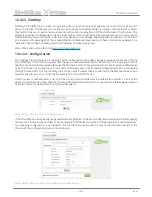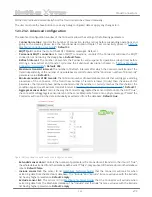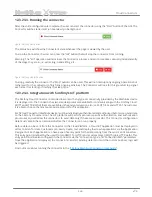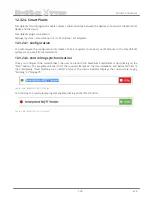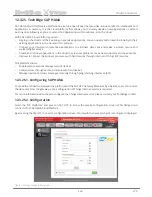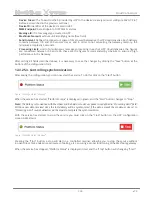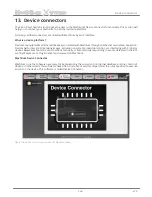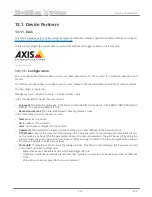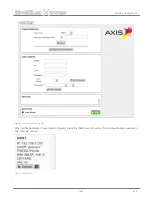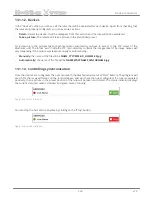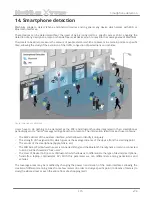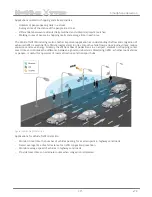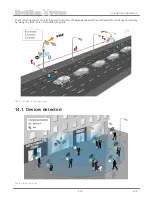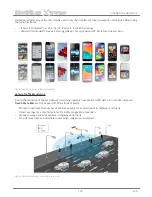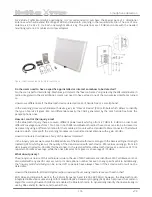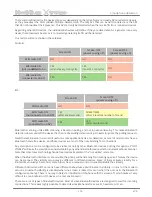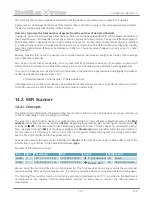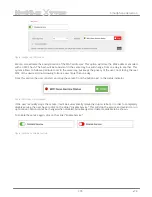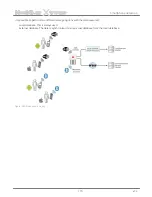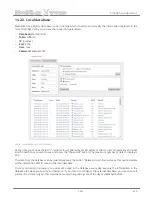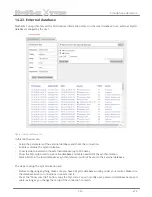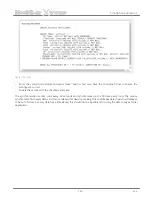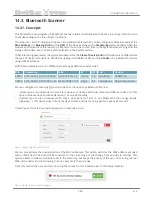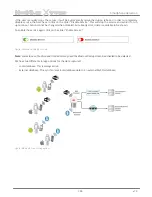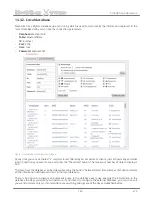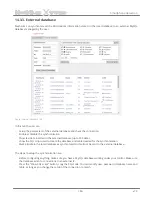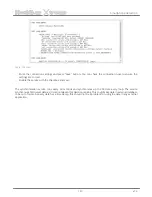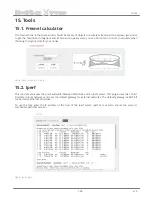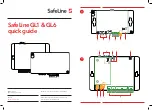
-174-
v7.3
Smartphone detection
Meshlium
X
treme
For Vehicle Traffic Monitoring applications, it is recommended to purchase the special pack of 2 directional
antennas which will extend the range of WiFi and Bluetooth scanning in the required direction. The size of one
antenna is 40 x 36 x 4 cm. Each one weights about 2 kg. The antennas are 18 dBi and come with the needed
mounting system, 2 m cables and screw adapters.
Figure: Directional antenna for Meshlium Scanner
Do the users need to have a specific app installed or interact somehow to be detected?
No, the scan is performed silently, Meshlium just detects the “beacon frames” originated by the WiFi and Bluetooth
radios integrated in the smartphones. Users just need to have at least one of the two wireless interfaces turned
on.
How do we differentiate if the Bluetooth device detected is a car’s hands-free or a smartphone?
In the scanning process each Bluetooth device gives its “Class of Device” (CoD) attribute which allows to identify
the type of service it gives. We can differentiate easily the CoD’s generated by the car’s hands-free from the
people’s phone ones.
How do I control the inquiry area?
In the Bluetooth inquiry there are seven different power levels which go from -27 dBm to 3 dBm in order to set
different coverage zones from 10 to 50m. In both WiFi and Bluetooth radios these zones can also be increased or
decreased by using a different antenna for the module as it counts with a standard N-Male connector. The default
antenna which comes with the scanning modules is an omnidirectional antenna with a gain of 5dBi.
How do I calculate the distance of any of the devices detected?
In the inquiry process we receive the MAC address of the Bluetooth device along with the Received Signal Strength
Indicator (RSSI) which gives us the quality of the transmission with each device. RSSI values usually go from -40
dBm (nearest nodes) to -90 dBm (farthest ones). In the tests performed Bluetooth devices at a distance of 10 m
reported -50 dBm as average, while the ones placed at 50 m gave us an average of -75 dBm.
What about privacy?
The anonymous nature of this technique is due to the use of MAC addresses as identifiers. MAC addresses are not
associated with any specific user account or mobile phone number not even to any specific vehicle. Additionally,
the “inquiry mode” (visibility) can be turned off so people have always chosen if their device will or will not be
detectable.
How do the Bluetooth, WiFi and ZigBee radios coexist without causing interferences with each other?
WiFi, XBee and Bluetooth work in the 2.4GHz frequency band (2.400-2.480 MHz), however, the Bluetooth radio
integrated in Meshlium uses an algorithm called Adaptive Frequency Hopping (AFH) which improves the common
algorithm used by Bluetooth (FHSS) and enables the Bluetooth radio to dynamically identify channels already in
use by XBee and WiFi devices and to avoid them.

